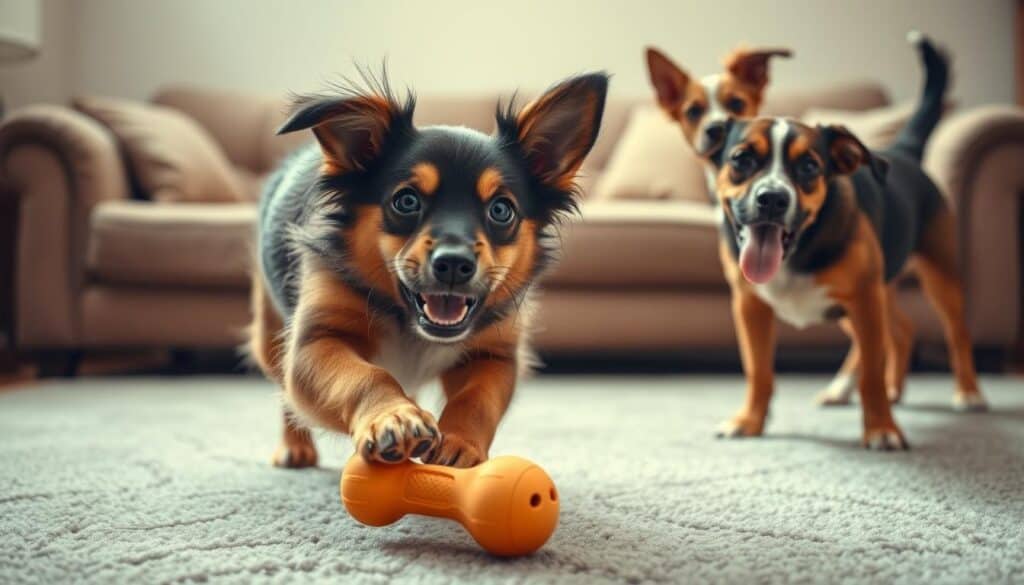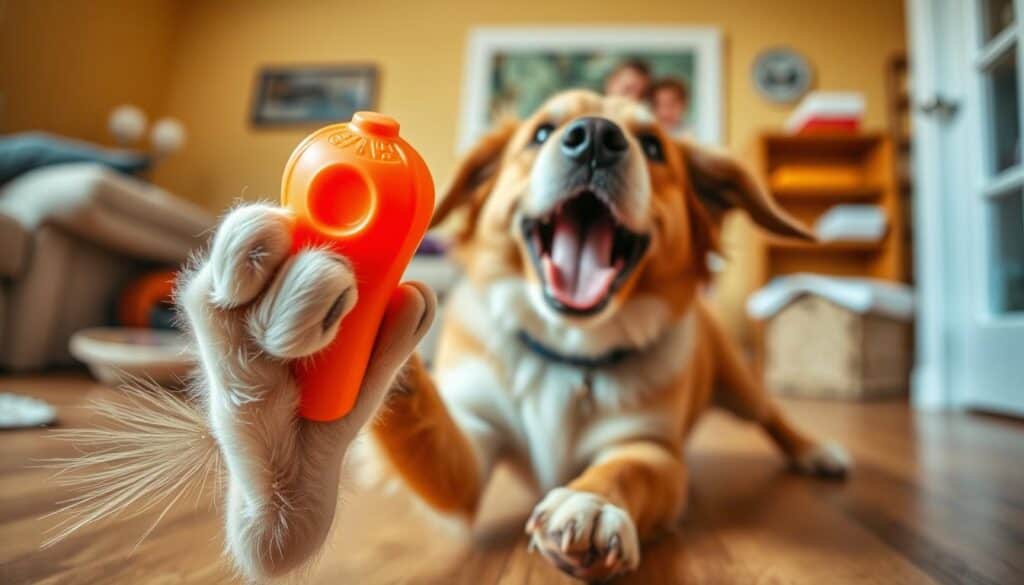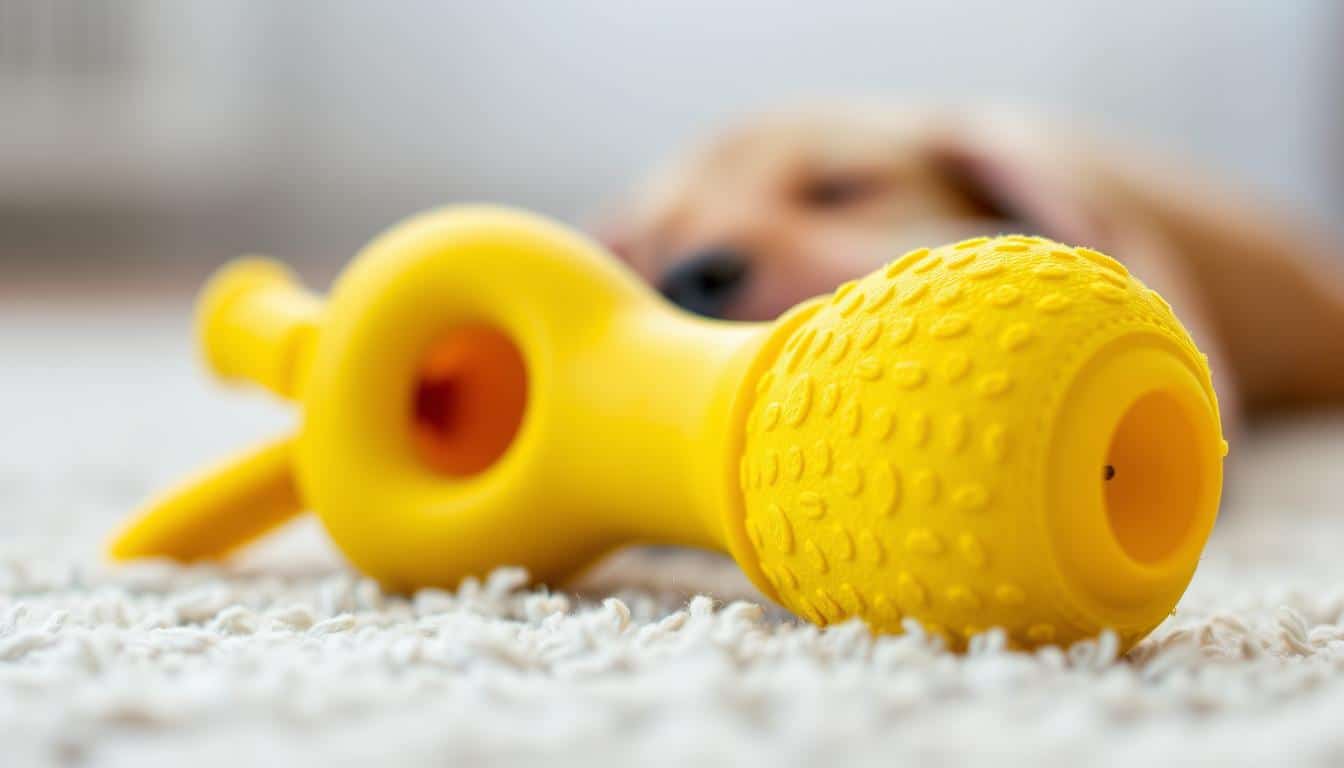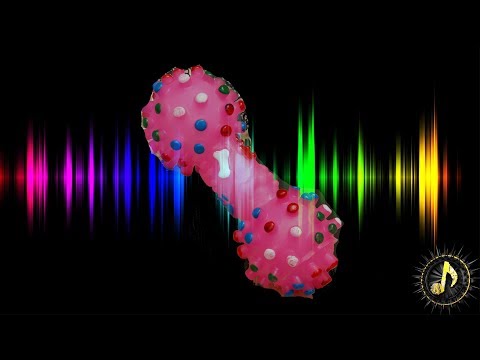Have you ever wondered why dog squeaky toy sounds have become a sensation among pet owners? These small, yet powerful, sounds have captured the attention of both dogs and their owners, creating a fun and engaging experience for the whole family. Whether it’s a high-pitched squeak or a deep, rumbling noise, these sounds have a unique ability to trigger playful behaviors and spark canine curiosity.
Realistic squeaky toy sounds have evolved over the years, with app developers continuously improving their offerings. For instance, updates on Oct 9, 2023, and Oct 20, 2017, have enhanced user experiences, making these sounds more lifelike than ever. Users often share stories of their dogs exhibiting longing and curiosity, with behaviors like tilting their heads or dropping objects in response to these sounds.
What makes these sounds so captivating? It all comes down to the science behind them. Later sections of this guide will delve into the psychology of why dogs love squeaky toys and provide practical tips on how to integrate these sounds into your dog’s daily routine. We’ll also explore safety guidelines to ensure your dog’s playtime remains enjoyable and safe.
Whether you’re a seasoned dog owner or just starting your journey with your furry friend, this guide offers a comprehensive look at the world of dog squeaky toy sounds. With a focus on scientific research and real-life examples, this content is tailored for a U.S. audience seeking to understand their dog’s behavior better.
Key Takeaways
- Dogs are naturally drawn to realistic squeaky toy sounds due to their instinctual behaviors.
- These sounds can trigger playful reactions, including tail wagging and barking.
- Apps with squeaky toy sounds have seen improvements over the years, enhancing user and dog experiences.
- Understanding the science behind these sounds can help you use them effectively for your dog’s playtime.
- Safety guidelines are crucial to ensure your dog’s interactions with squeaky toys remain safe and enjoyable.
Understanding the “dog squeaky toy sound” Phenomenon
High-pitched noises have long fascinated both pets and their owners. These sounds, often mimicking prey, trigger instinctual reactions in dogs, making them a key element in interactive toys. The appeal lies in their ability to simulate real-life hunting scenarios, sparking natural behaviors.
The Science Behind the Sound
Research shows that dogs’ hearing is attuned to higher frequencies than humans. Sounds in the range of a squeaky toy are particularly effective at grabbing their attention. This auditory sensitivity is rooted in their evolution as hunters, where detecting high-pitched prey sounds was crucial.
Studies indicate that these high-frequency sounds can stimulate a dog’s brain, releasing dopamine and inducing excitement. This biochemical response explains why dogs often exhibit playful behaviors when they hear such noises.
How High-Pitched Noises Affect Canine Behavior
Behavioral studies reveal that dogs tend to focus longer on high-pitched noises. This prolonged engagement suggests that such sounds are more captivating and effective in initiating play. Owners have reported instances where their dogs display heightened alertness and curiosity upon hearing these sounds.
The frequency of these noises plays a critical role. Toys emitting sounds close to natural prey noises are more likely to elicit a strong reaction. This mimicry taps into a dog’s innate instincts, making playtime more stimulating and enjoyable.
Choosing the right toy based on sound frequency is essential. Toys with adjustable or variable pitches can offer a more dynamic play experience, keeping a dog’s interest longer. This consideration helps in selecting toys that align with a dog’s sensory preferences, enhancing playtime effectiveness.
Why Dogs Love Squeaky Toys
Dogs have an innate attraction to squeaky toys, and this fascination stems from their natural hunting instincts. These toys mimic the sounds of small prey, triggering a primal response that encourages playful behavior. The high-pitched squeaks resonate deeply with dogs, drawing them in with an irresistible urge to chase and capture.
Behavioral Reactions to Squeaker Noises
The moment a dog hears a squeaky toy, its ears perk up, and it becomes fully alert. This reaction is instantaneous, often followed by energetic actions like running, jumping, or pawing at the toy. The squeaker’s noise serves as a trigger, signaling to the dog that it’s time to engage in playful activities.
- Increased alertness and focus on the source of the sound.
- Physical reactions such as tail wagging, barking, and active play.
- Instinctual behaviors like chasing and attempting to “capture” the sound.
Emotional Connections and Playtime Excitement
Playtime with squeaky toys is more than just physical exercise; it’s an emotional experience for dogs. The excitement they feel when hearing these sounds can relieve stress and anxiety, creating a sense of joy and satisfaction. Dogs often associate these toys with positive interactions, strengthening their bond with their owners.
Owners have shared numerous stories of their dogs experiencing pure delight when squeaky toys are introduced. One common observation is how dogs will often drop whatever they’re doing upon hearing the squeak, immediately focusing on the toy. This reaction highlights the strong emotional connection dogs develop with these toys.
Real User Experiences and Reviews
Many dog owners have reported that squeaky toys are among their pets’ favorites. One owner shared how her dog’s face lights up the moment the squeaker is activated, leading to enthusiastic play sessions. Another owner mentioned that the repetitive sound keeps their dog engaged for extended periods, making playtime more enjoyable and tiring for the pet.
While most experiences are positive, some owners caution that overly loud squeakers can startle sensitive dogs. Balancing the volume and type of squeaker is crucial to ensure a positive experience for all pets.

Practical Tips for Safe Squeaker Play
Keeping playtime safe and enjoyable for your pet requires careful selection and supervision. Here’s how you can ensure a positive experience for both you and your furry friend.
Choosing the Right Toy for Your Dog
When selecting a squeaker toy, prioritize durability and safety. Opt for toys made from non-toxic, sturdy materials that can withstand aggressive play. Avoid toys with small parts that could be easily detached and pose a choking hazard. Consider the size of the toy relative to your dog’s mouth to ensure it’s neither too small nor too large.
The intensity of the squeaker’s sound is another important factor. While high-pitched noises can captivate dogs, overly loud sounds might startle sensitive pets. Look for toys with adjustable or softer squeakers to suit your dog’s comfort level.
Integrating Squeaky Toys into Daily Routines
Incorporate squeaker toys into your dog’s routine for mental and physical stimulation. Use them during playtime to spark excitement and engagement. Many owners find these toys helpful for calming their pets during stressful situations, such as thunderstorms or fireworks.
Monitor play sessions to prevent overstimulation. Alternate between squeaker toys and other activities to maintain your dog’s interest and prevent boredom. Supervised play also helps ensure the toy remains intact and safe for your pet.

By choosing the right toy and integrating it thoughtfully into your dog’s routine, you can create a fun and safe play experience that strengthens your bond and keeps your pet happy and healthy.
Conclusion
In conclusion, the allure of high-pitched noises has been a fascinating topic for pet owners and researchers alike. By understanding the science behind these sounds and their impact on canine behavior, owners can make informed decisions about their pets’ toys. Real-life experiences shared by users highlight the joy and engagement these toys bring, while practical tips ensure safe and enjoyable playtime.
Emphasizing safety and durability when choosing toys is crucial. High-quality, non-toxic materials and appropriate sizing are essential to prevent hazards. Additionally, considering the sound intensity helps in selecting toys that suit a dog’s sensitivity, ensuring a positive experience.
As app updates like those from Oct 9, 2023, and Oct 20, 2017, show, continuous improvements are being made to enhance user and dog experiences. These advancements reflect a commitment to creating engaging and safe toys, keeping up with evolving preferences and needs.
By combining scientific insights with user feedback, pet owners can create a stimulating environment that fosters happiness and health in their dogs. Encouraging interactive play not only strengthens the bond between owner and pet but also contributes to the overall well-being of the dog.
Exploring further resources or reviews can provide additional insights and help owners stay updated on the best options available. With ongoing developments, the future of interactive toys looks promising, ensuring continued enjoyment for pets and their owners alike.




